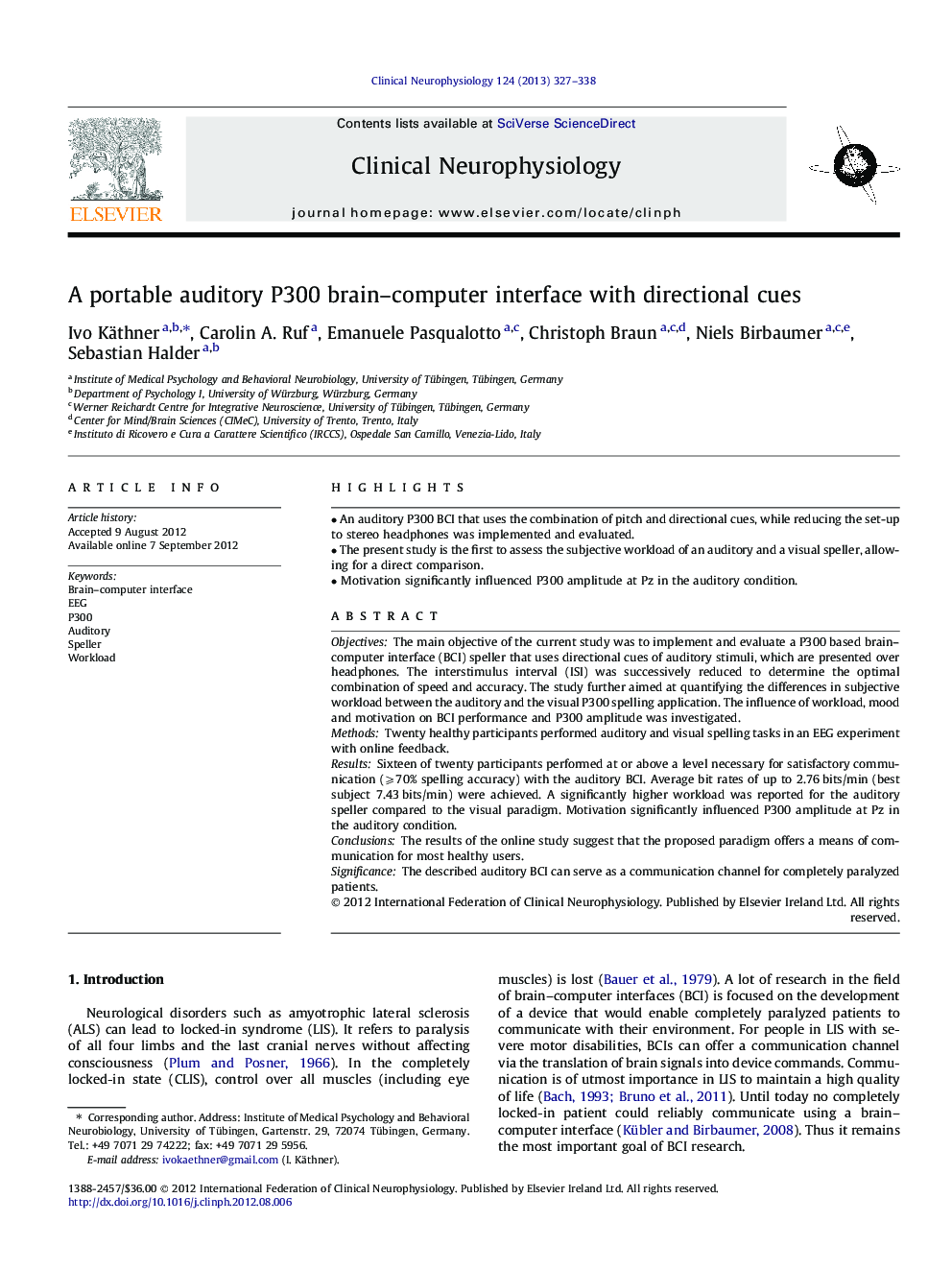| Article ID | Journal | Published Year | Pages | File Type |
|---|---|---|---|---|
| 3044613 | Clinical Neurophysiology | 2013 | 12 Pages |
ObjectivesThe main objective of the current study was to implement and evaluate a P300 based brain–computer interface (BCI) speller that uses directional cues of auditory stimuli, which are presented over headphones. The interstimulus interval (ISI) was successively reduced to determine the optimal combination of speed and accuracy. The study further aimed at quantifying the differences in subjective workload between the auditory and the visual P300 spelling application. The influence of workload, mood and motivation on BCI performance and P300 amplitude was investigated.MethodsTwenty healthy participants performed auditory and visual spelling tasks in an EEG experiment with online feedback.ResultsSixteen of twenty participants performed at or above a level necessary for satisfactory communication (⩾70% spelling accuracy) with the auditory BCI. Average bit rates of up to 2.76 bits/min (best subject 7.43 bits/min) were achieved. A significantly higher workload was reported for the auditory speller compared to the visual paradigm. Motivation significantly influenced P300 amplitude at Pz in the auditory condition.ConclusionsThe results of the online study suggest that the proposed paradigm offers a means of communication for most healthy users.SignificanceThe described auditory BCI can serve as a communication channel for completely paralyzed patients.
► An auditory P300 BCI that uses the combination of pitch and directional cues, while reducing the set-up to stereo headphones was implemented and evaluated. ► The present study is the first to assess the subjective workload of an auditory and a visual speller, allowing for a direct comparison. ► Motivation significantly influenced P300 amplitude at Pz in the auditory condition.
